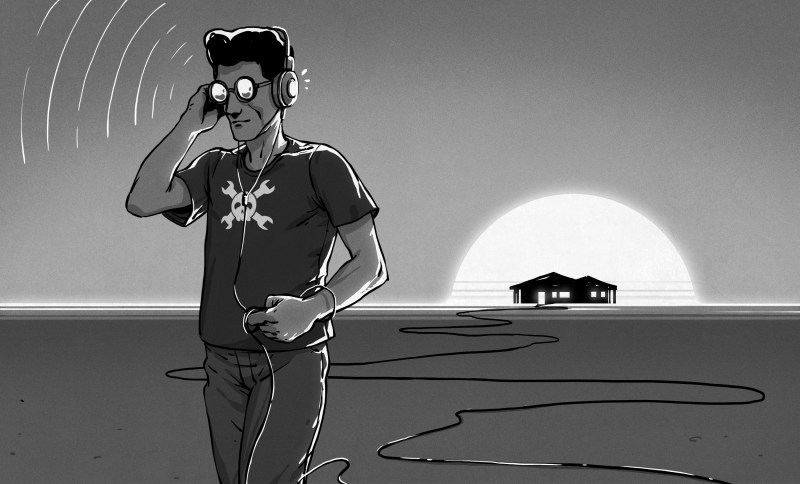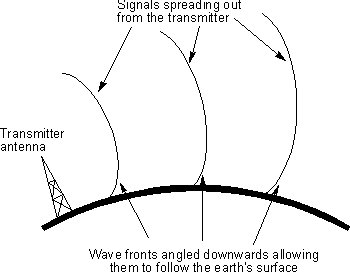
In the 125 years since Marconi made his first radio transmissions, the spectrum has been divvied up into ranges and bands, most of which are reserved for governments and large telecom companies. Amidst all of the corporate greed, the “little guys” managed to carve out their own small corner of the spectrum, with the help of organizations like the American Radio Relay League (ARRL). Since 1914, the ARRL has represented the interests of us amateur radio enthusiasts and helped to protect the bands set aside for amateur use. To actually take advantage of the wonderful opportunity to transmit on these bands, you need a license, issued by the FCC. The licenses really aren’t hard to get, and you should get one, but what if you don’t feel like taking a test? Or if you’re just too impatient?
Well, fear not because there’s some space on the radio spectrum for you, too.
Welcome to the wonderful world of (legal!) unlicensed radio experimentation, where anything goes. Okay, not anything but the possibilities are wide open. There are a few experimental radio bands, known as LowFER, MedFER, and HiFER where anyone is welcome to play around. And of the three, LowFER seems the most promising.
Gettin’ The Band Back Together
Before we dive into what the LowFER, MedFER, and HiFER bands actually are, it’s worth noting that these rules apply in the US only. That’s not to say that these bands are illegal elsewhere, but be sure to check your local frequency allocations before firing up a transmitter.

LowFER, as the name would suggest, contains the lowest frequency range of the three, falling between 160 kHz and 190 kHz, with a whopping wavelength of around one mile. Also known as the 1750-meter band, this frequency range is well-suited for long transmission paths through ground wave propagation, a mode in which the radio signals move across the surface of the earth. This can easily carry even low-power signals hundreds of miles, and occasionally through some atmospheric black magic, signals have been known to travel thousands of miles. These ground wave signals also travel well across bodies of water, especially salt water.
MedFER is the medium frequency experimental band, specifically running from 510 kHz to 1,705 kHz. Now that range may sound similar, and it should because it’s also known as the AM Broadcast band! That’s right, you can listen in on this one with your old AM radio. There’s a catch though — amateur experimenters are limited to 0.1 W of transmit power, and can only use a three-meter long antenna. While that’s fine for playing around, there’s little chance of being heard very far away over the 500 W professional stations with massive antennas that dominate the band.
And then there’s HiFER, the high-frequency experimental band. Much narrower than the others at only 14 kHz wide, it sits centered on 13.56 MHz. This band is commonly used for many RFID applications, including keycards, public transportation payments, and Nintendo Amiibo. Experimentation on this band is limited to extremely low power levels, and at such power levels signals only travel a few inches, which is perfect for RFID.
While there’s a lot that can be done on any of these bands, LowFER seems to be the one that yields itself to some serious fun. MidFER and HiFER both restrict power used so low that you’re not reaching outside of your house, or even arm’s length, respectively.
Low Frequencies, High Expectations
Like the other bands, LowFER does have some restrictions — but they’re much less limiting. First and foremost, the power into the last change of the transmitter can’t exceed 1 W. That’s still fairly low power, but there are some digital modes, such as WSPR, that are known to propagate around the world at 1 W on some frequencies. Antenna lengths are also limited to 15 meters– which seems awfully short compared to the nearly-two-kilometer wavelength. Generally, the length of such a wire antenna should be tuned to a fraction of a wavelength — 1, ½, ¼, etc. for maximum efficiency. In this case, “antenna length” also includes the transmission line between the radio and the antenna. For this reason, it’s common to connect antennas directly to LowFER radios to maximize the radiating length of the antenna.
As you may imagine, because the frequencies we’re dealing with here are so low, there are few commercially available solutions that let you get on-the-air with LowFER– but when has that ever stopped the hacker and amateur radio communities? Even with these limitations, we’ve seen some wonderful kHz-range projects, like this Altoids Tin Beacon and this Arduino-based transmitter. If you want to start out by listening in, there are a number of beacons on the air right now.
Bandwidth is obviously an issue down low, so LowFER applications probably want a microcontroller- or computer-based solution driving them, so there’s nothing to stop you from keeping the link running 24/7. The long antennas required also favor fixed operation. Intra-Hackerspace low-bitrate data networks?
How Low Can You Go?
So, now it’s your turn. What will you do with LowFER? Build a tiny transmitter and try to talk to a far-away friend? Send some waterfall art out into the æther, hoping some distant hacker sees it? Maybe even just engage in some good-old fashion CW. Although LowFER has been around for a while, we feel that there’s still a ton of untapped potential here for some crazy hacker fun. Just make sure to check (and obey!) your local laws, and tell us about anything awesome you do!
